After-Hours Tour of the Fraunces Tavern Museum: "Path to Liberty"
Explore a new exhibit inside the oldest building in Manhattan, a witness to history throughout the Revolutionary War Era!


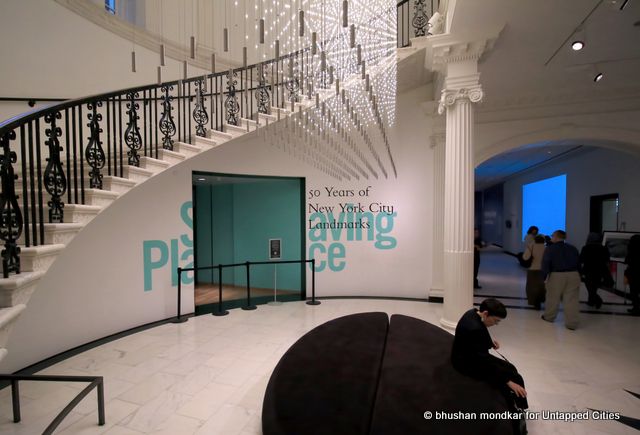
In celebration of the 50th anniversary of the pioneering Landmarks Law in New York City, the Museum of the City of New York opened its newest exhibition,”Saving Place: 50 years of New York City Landmarks,” depicting events in the history of the city that follow the remarkable story of the birth and impact of the landmarks movement. Untapped Cities got a sneak preview of this exciting exhibition, which opened April 21st, with curator Donald Albrecht, co-curator Andrew Dolkart, consulting curator Seri Worden and the Director of the Museum of the City of New York, Susan Henshaw Jones.
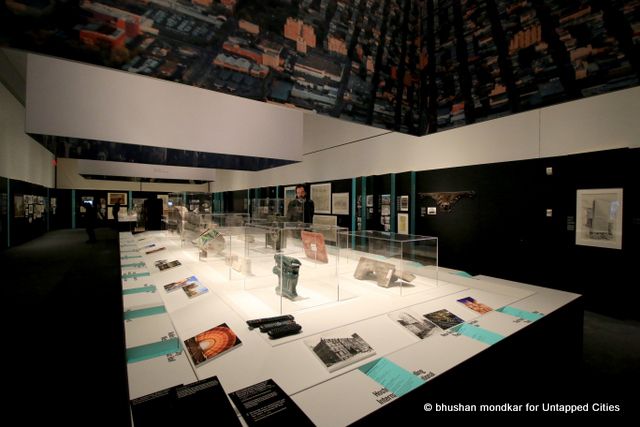
Through original drawings, paintings, photographs and actual building fragments, the exhibition shows the evolution and expansion of the Landmarks Law over time. A three-dimensional timeline winding along the gallery chronicles decades of struggle dating back to the end of the 19th century, when concerned citizens fought to save architecturally and historically significant buildings such as St. Johns Chapel (which was eventually demolished after nearly two decades of preservation efforts). While there were successes and failures prior to the law, these initial struggles into the early 1940s proved invaluable to the future of preservation in New York.
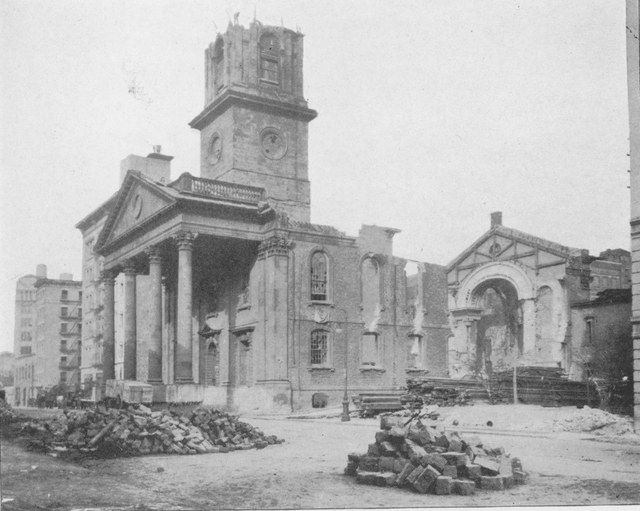
“While the movement developed over many years, it was galvanized by large historic losses in the early 1960s, most notably the demolition of the world famous and architecturally significant Pennsylvania Station in 1963.” said Donald Albrecht. “The destruction of Penn Station was indeed the last straw before the long awaited law was signed in 1965 by Mayor Wagner.”
![Untitled [The demolition of Pennsylvania Station, 1964-1965.]](https://www.untappedcities.com/content/images/wp-content/uploads/2015/04/saving-place-iwan-baan-penn-station-demolition-nyc-landmarks-law-50th-anniversary-museum-of-city-of-new-york-exhibition.jpg)
The intense legal challenges to the law in the 1960s and 1970s are also marked on the timeline, with a focus on the Grand Central Terminal case (Penn Central Transportation Co. v. New York City) that went all the way to the U.S. Supreme Court and involved high profile activists including Jacqueline Kennedy. Never-before-seen drawings of architect Marcel Breuer’s proposed tower above Grand Central Terminal highlight this important milestone on the timeline.
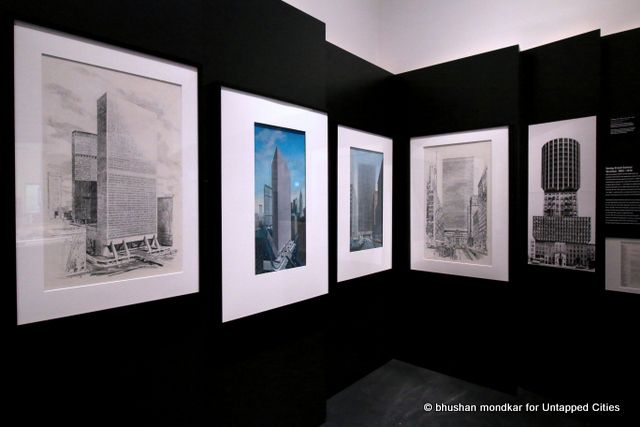
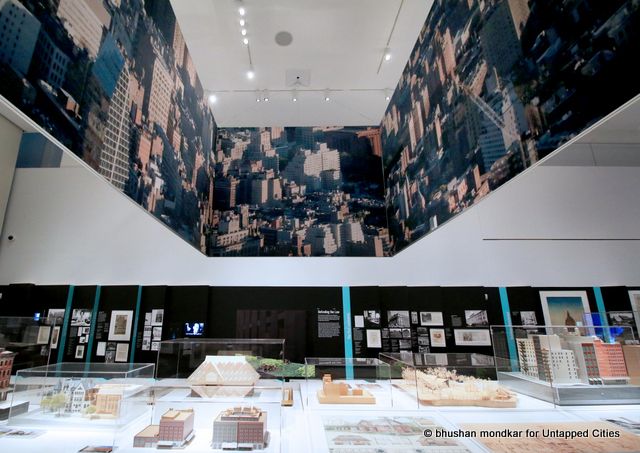
While the trail through history meanders along the walls, architectural models and building fragments from demolished and restored landmarked buildings form the focal point of the exhibition giving a snapshot of the triumphs and failures of the preservation movement. The artifacts include a marble eagle head from the original Pennsylvania Station, original and restored tiles from Bethesda Terrace in Central Park and the only surviving cast iron spandrel panel from Edgar Laing Stores aka Bogardus Building, among others. We will have a special article on more of these unique fragments next week on Untapped Cities.
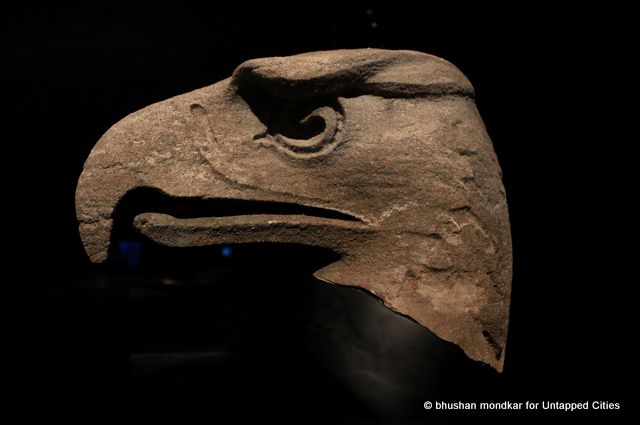
“The landmark designation is not about freezing the city or creating a museum, but it is about using the past to create a dynamic present and future for the city, evident in the significant amount of new design and construction that has taken place in historic districts across the city,” mentioned Andrew Dolkart while pointing to the three foot tall model of Norman Foster’s glass skyscraper built above the Art Deco Hearst Building. Through a collection of several architectural models and renderings of buildings built in historic districts and the addition of new buildings atop or beside existing landmarks, the exhibition showcases the recent accomplishments of the Landmarks Preservation Commission.
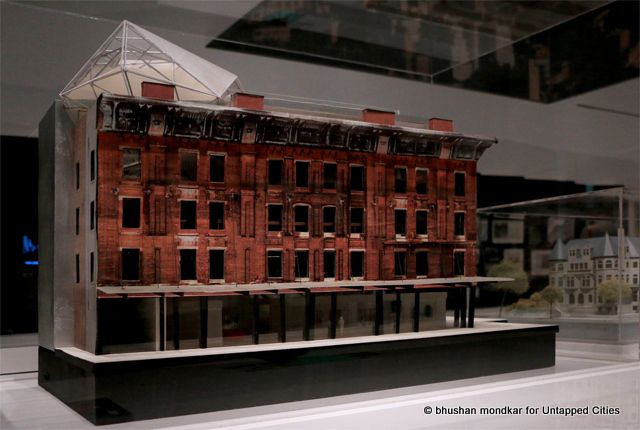
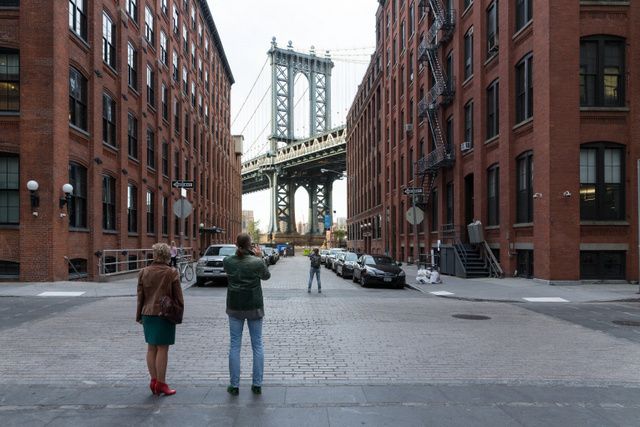
The exhibition also features stunning pictures of landmarks photographed in the context of the modern city. The museum commissioned renowned architectural photographer Iwan Baan for a series of panoramic photographs of current day New York City that shows the intertwining of old and new architecture. Talking about these photographs, Donald Albrect said, “What is interesting is that unlike most architectural photographs, they are not beautiful shots of buildings. These are pictures of the building in the context of the city. You will see people going about their everyday lives with the landmark actually there.” While a screen at the entrance streams these architectural photographs of landmarks in action, three supersized aerial panoramas float in space above the exhibit, emphasizing the coexistence of the old and new that characterize New York’s urban fabric.
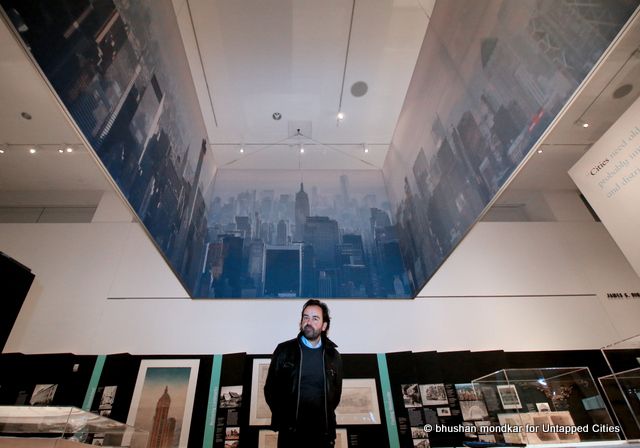
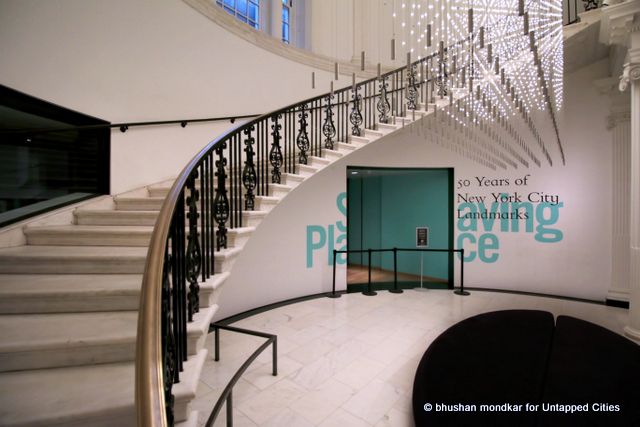
Summing up this comprehensive exhibition, Dolkart said, “Landmarking is about creating a city where old buildings contribute to vibrant neighborhoods and where new construction in historic districts reinforces an area’s special character. The law has been a success beyond the dreams of its early advocates.”
Saving Place: 50 Years of New York City Landmarks will remain on view through Sunday, September 13th 2015 at the Museum of the City of New York. Read on for our interview with curators Donald Albrecht and Andrew Dolkart. A book, Saving Place: 50 Years of New York City Landmarks has been published by Monacelli Press in conjunction with the exhibition.
This article was written in part by Catherine Mondkar. Get in touch with the authors at @bhushan_NYC and @catherine2m
Subscribe to our newsletter